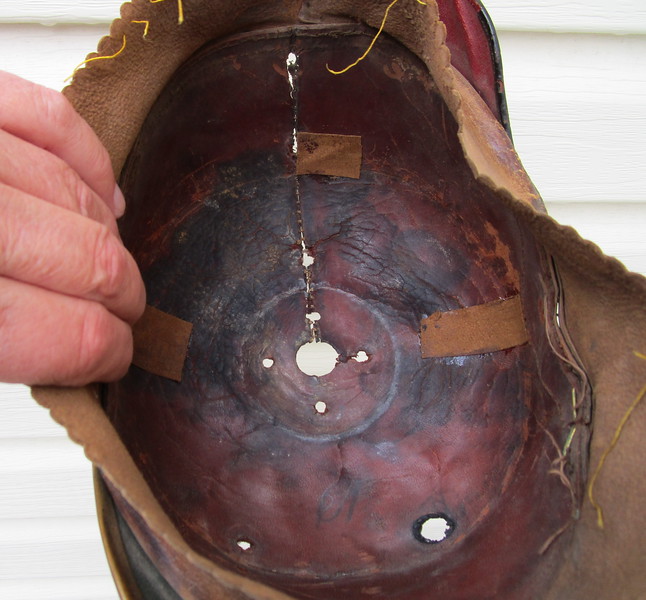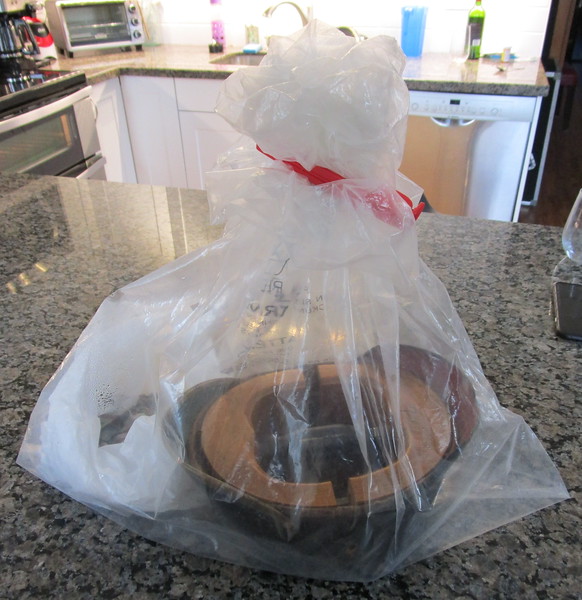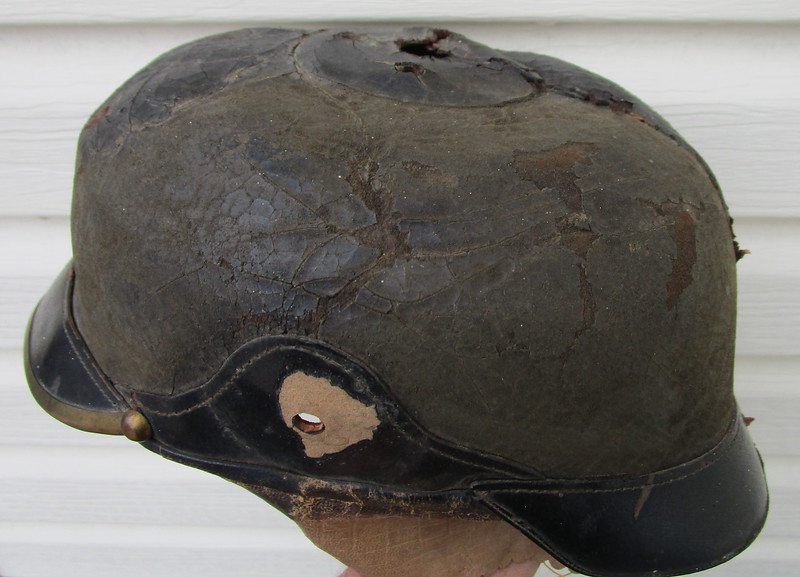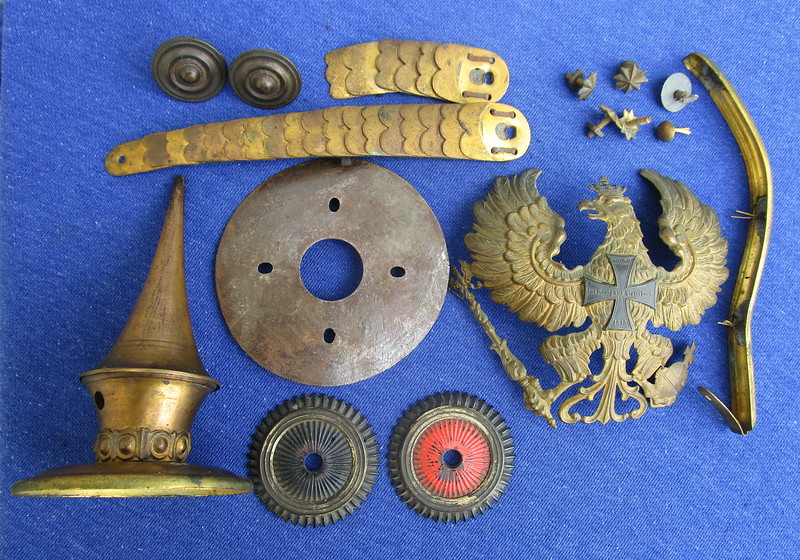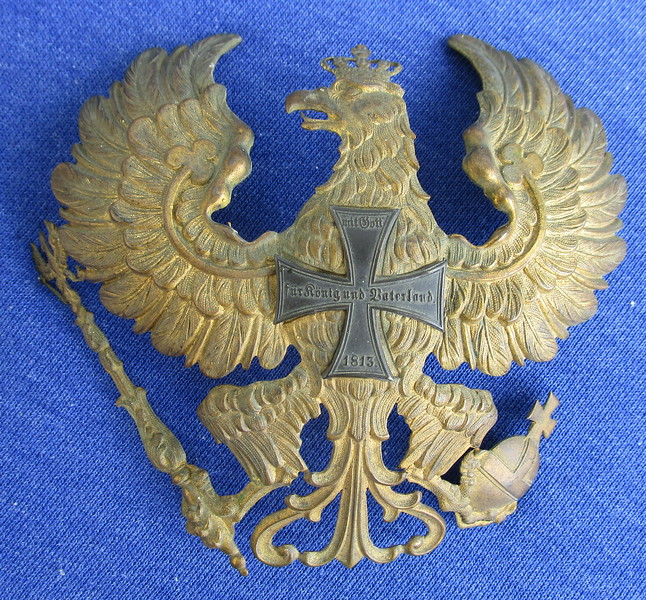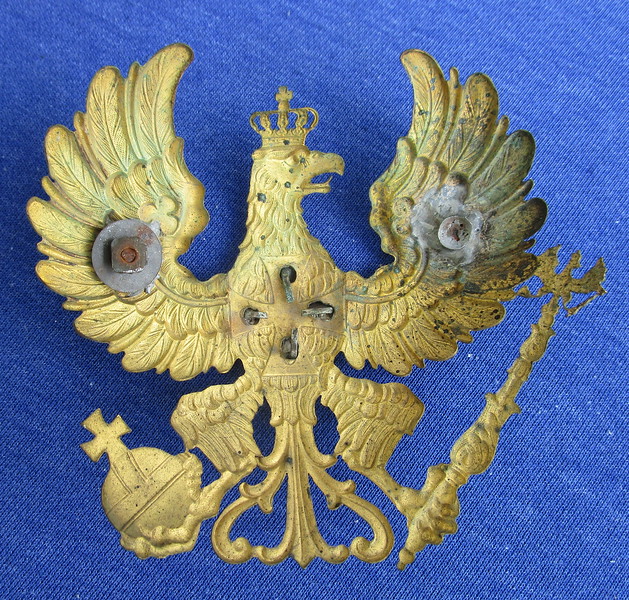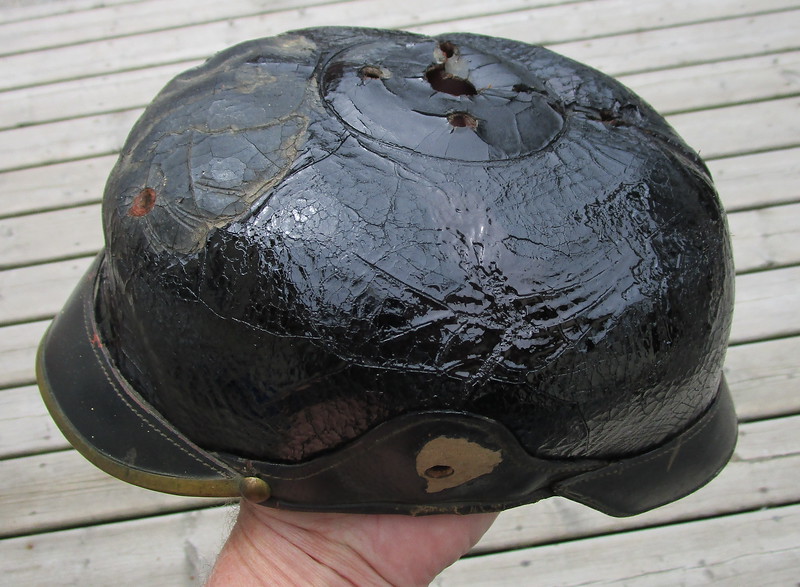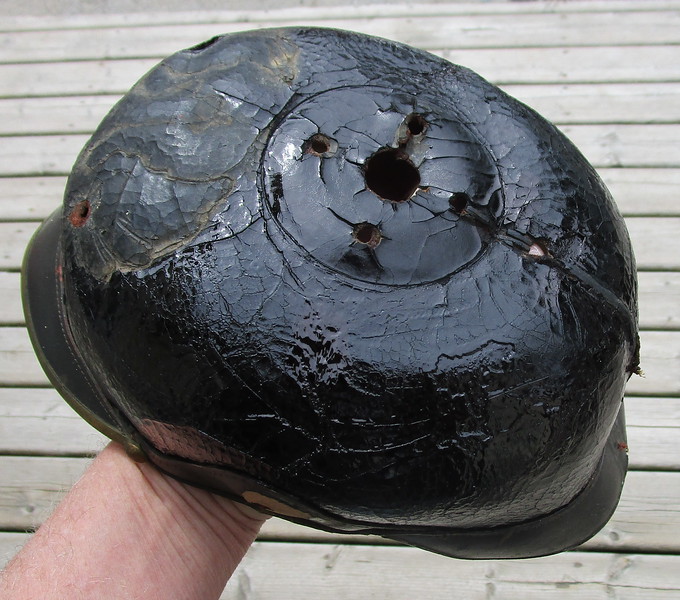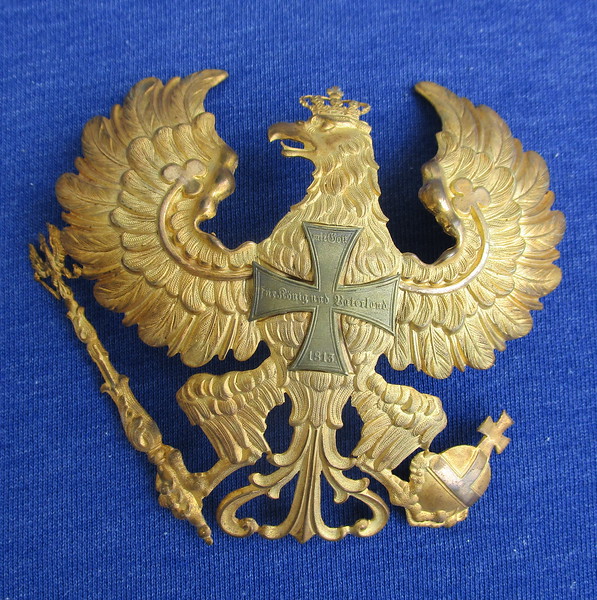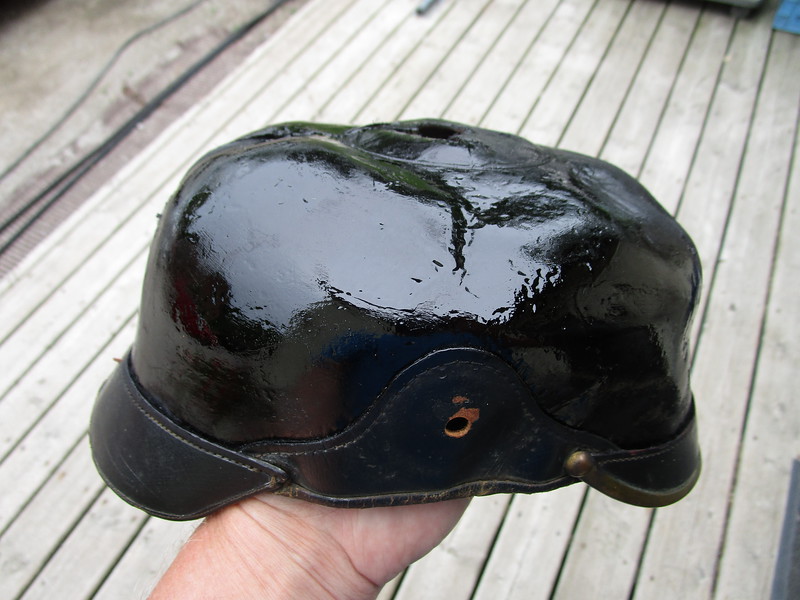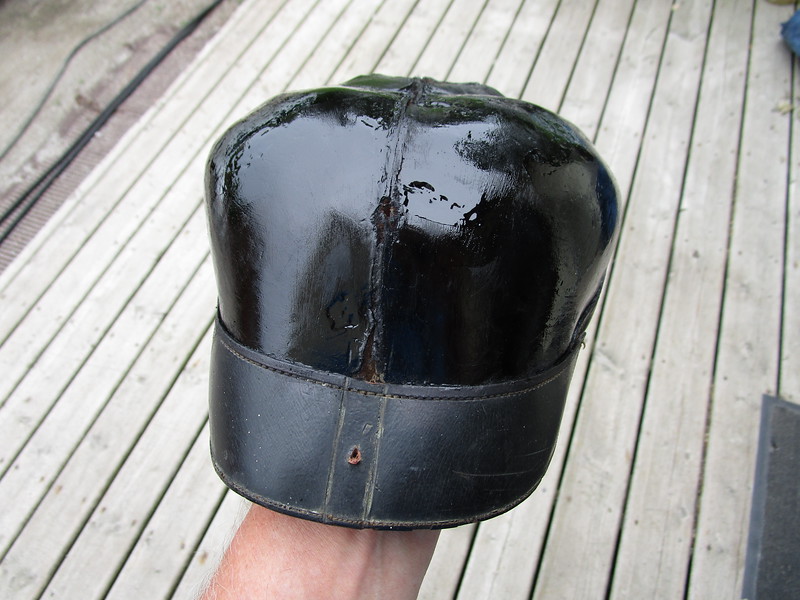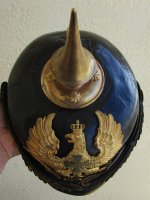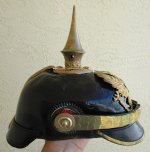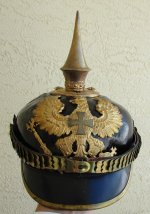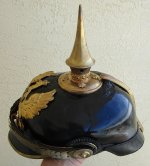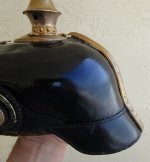First an explanation as to the title of this post...for our non English speaking members, "Mellon"is English slang for one's head, so if I have a big mellon then it means I have a large head.
I started another restoration project for a customer today, a Prussian infantry officer helmet with some problems. A Prussian Officer pickelhaube is not unusual but what is exceptional about this helmet, is "THE SIZE"...61 3/4 cm. This is the size marking written in grease pencil on the inside of the shell. This is the largest size Imperial German helmet that I have ever seen. My previous Haube record was a size 60 cm JzP helmet which I had in my collection but had to sell. These are the problems involved in this project: shell top and sides have collapsed, small tear in shell near rear stitch line, major crazing to shellac finish and missing silk liner. I was sent all fittings so these will be put back on once the shell is dealt with...one scale is missing it's lower section. The photos:
My previous Haube record was a size 60 cm JzP helmet which I had in my collection but had to sell. These are the problems involved in this project: shell top and sides have collapsed, small tear in shell near rear stitch line, major crazing to shellac finish and missing silk liner. I was sent all fittings so these will be put back on once the shell is dealt with...one scale is missing it's lower section. The photos:
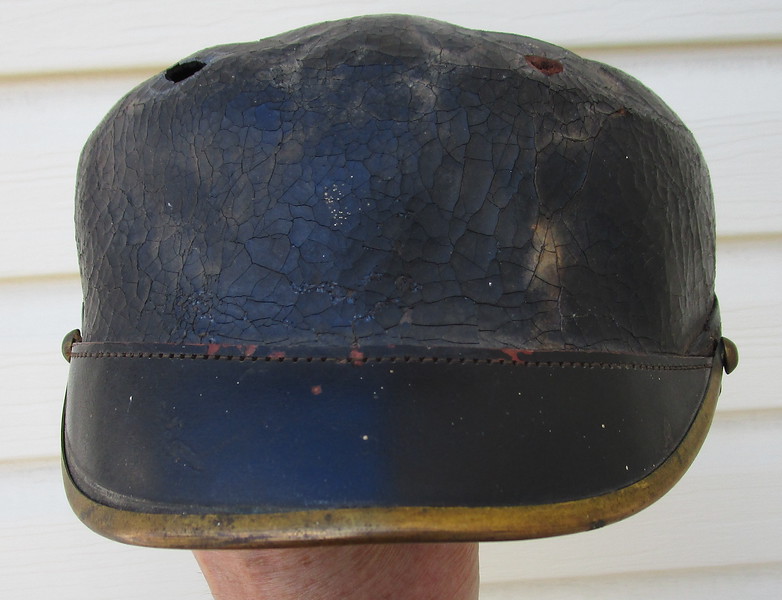
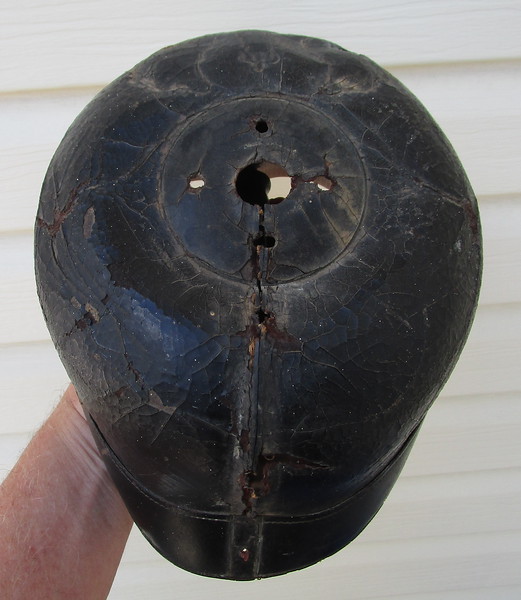
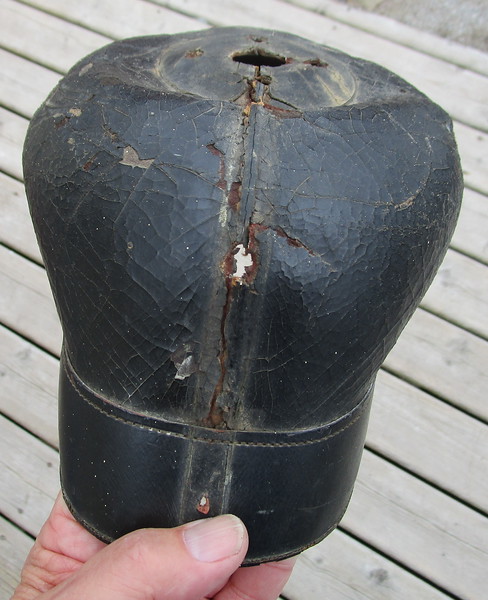
This tear will have to be repaired on the inside and then filled in with finish. It is amazing that with this amount of shrinkage the visors did not pull off the shell.
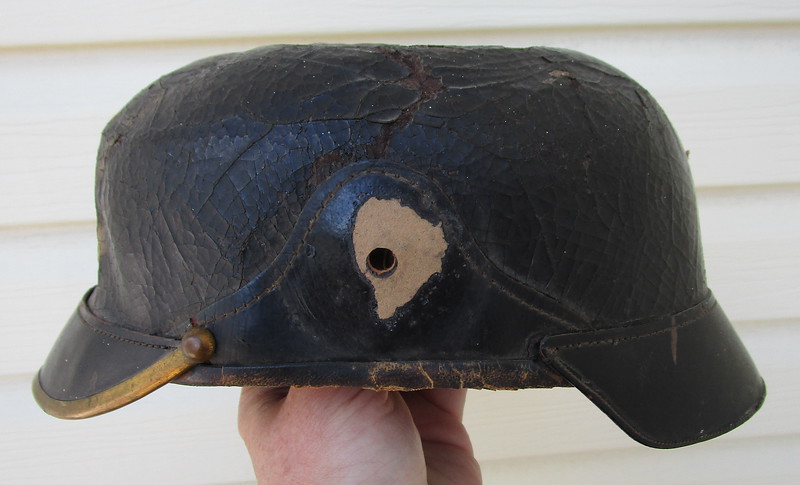
A common occurrence...the card board backing to the kokarde fuses with the finish and tears.
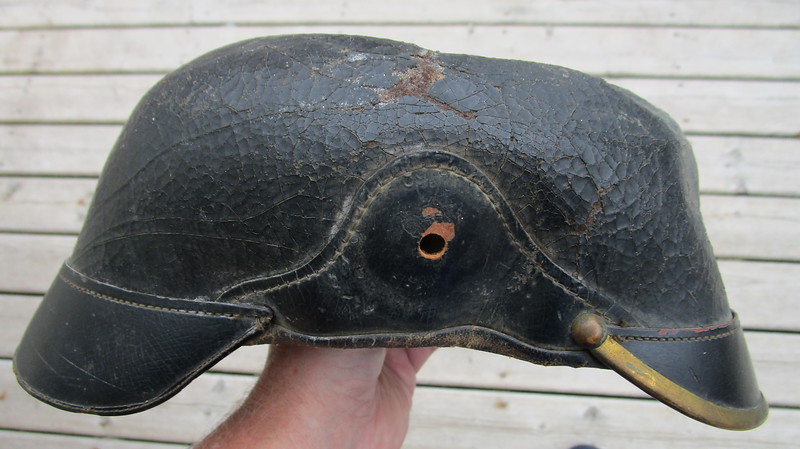
There is going to be a lot of finish work on this project as we have major crazing. This loss of "finish rigidity" has to be restored.
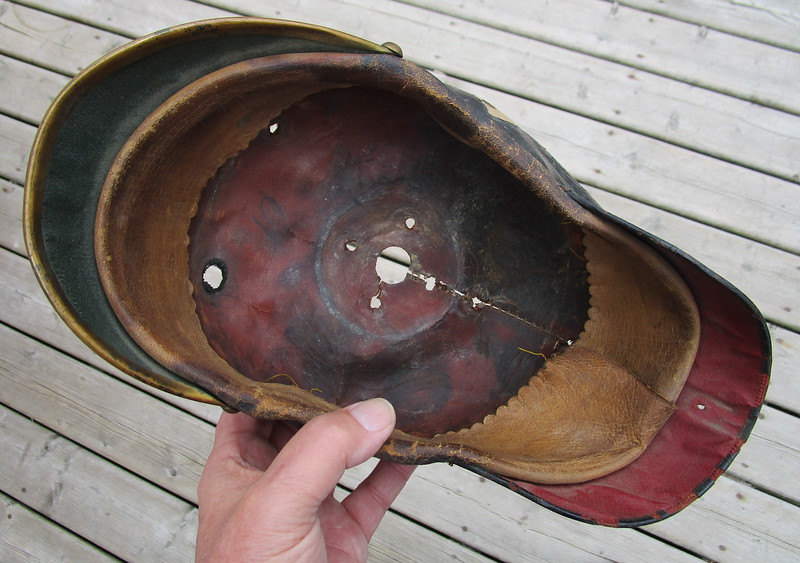
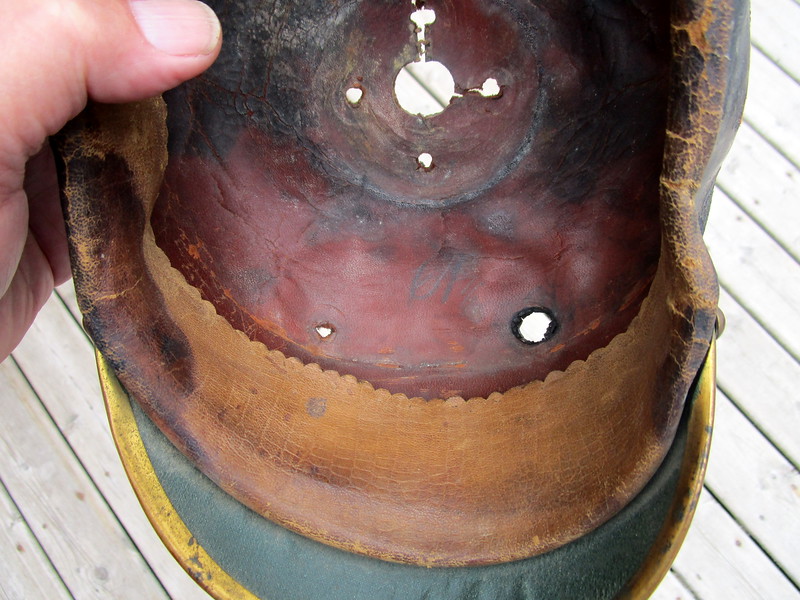
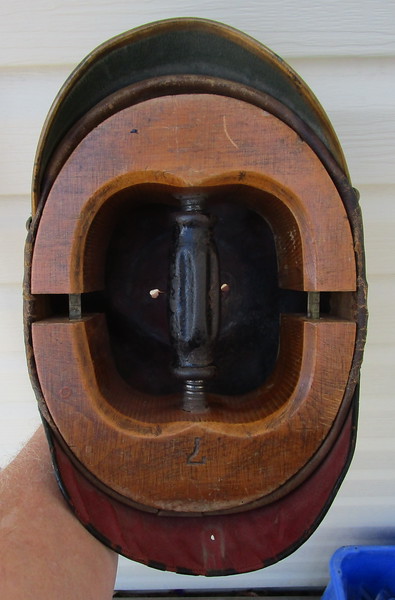
An antique hat stretcher is placed in the shell to put it back into proper shape. The helmet was then placed in a sealed plastic bag with wet newspaper in order to put moisture back into the shell so it can be blocked. The huge size of this helmet becomes evident with the stretcher in place.
I started another restoration project for a customer today, a Prussian infantry officer helmet with some problems. A Prussian Officer pickelhaube is not unusual but what is exceptional about this helmet, is "THE SIZE"...61 3/4 cm. This is the size marking written in grease pencil on the inside of the shell. This is the largest size Imperial German helmet that I have ever seen.



This tear will have to be repaired on the inside and then filled in with finish. It is amazing that with this amount of shrinkage the visors did not pull off the shell.

A common occurrence...the card board backing to the kokarde fuses with the finish and tears.

There is going to be a lot of finish work on this project as we have major crazing. This loss of "finish rigidity" has to be restored.



An antique hat stretcher is placed in the shell to put it back into proper shape. The helmet was then placed in a sealed plastic bag with wet newspaper in order to put moisture back into the shell so it can be blocked. The huge size of this helmet becomes evident with the stretcher in place.

